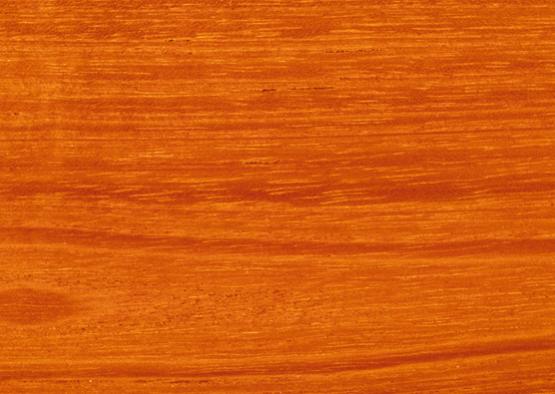Red cedar is a large hardwood that grows in the coastal rainforest areas of eastern Australia and parts of Papua New Guinea and the Philippines. It is commonly used for decorative applications such as veneers and paneling.
Cedar, Australian Red Cedar, Thitkado, Toon, Yom Hom, Calantas, Dolipega, Toona, Toona australis, Cedrela toona, Toona Sureni
Toona ciliata

Red cedar is a large hardwood that grows in the coastal rainforest areas of eastern Australia and parts of Papua New Guinea, South America, the Philippines and India. It is commonly used for internal decorative applications such as veneers and paneling.
The heartwood of red cedar ranges from a pale pinkish red through to a richer dark reddish brown. The sapwood is paler pink or yellow in colour and is distinctive from the heartwood. Red cedar has a rough, uneven texture with a grain that is usually straight but may be slightly interlocked. Growth rings are often visible. Red cedar also features a distinctive odour that is said to repel moths.
Red cedar is soft and has good workability. It nails and glues well. Red cedar can also be painted, stained and polished and it finishes well, however its rough texture may require extra work. Precautions should be taken when machining red cedar as the sawdust can cause irritation for some people.
Red cedar is scarce in Australian forests, however small quantities are being imported.
Shrinkage
| Very Low | Low | Medium | High | Very High | |
|---|---|---|---|---|---|

|

|

|
|||
Tangential : |
4.50%
|
||||
Radial : |
1.90%
|
||||
Unit Movement Tangential: |
0.22%
|
||||
Unit Movement Radial: |
0.10%
|
Strength Group

Very High |
High |
Reasonably High |
Medium High |
Medium |
Reasonably Low |
Low |
Very Low |
||
Unseasoned: |
S1 |
S2 |
S3 |
S4 |
S5 |
S6 |
S7 |
S8 |
|
|---|---|---|---|---|---|---|---|---|---|
 |
|||||||||
Seasoned: |
SD1 |
SD2 |
SD3 |
SD4 |
SD5 |
SD6 |
SD7 |
SD8 |
|
 |
Stress Grade

| Structural No. 1 |
Structural No. 2 |
Structural No. 3 |
Structural No. 4 |
Structural No. 5 |
|
Unseasoned: |
F7 |
F5 |
F4 |
|
|
Seasoned: |
F8 |
F7 |
F5 |
F4 |
|
Density per Standard

Seasoned: |
420kg/m3
|
|---|---|
Unseasoned: |
820kg/m3
|
Joint Group

Very High |
High |
Reasonably High |
Medium |
Low |
Very Low |
|
Unseasoned: |
J1 |
J2 |
J3 |
J4 |
J5 |
J6 |
|---|---|---|---|---|---|---|
 |
||||||
Seasoned: |
JD1 |
JD2 |
JD3 |
JD4 |
JD5 |
JD6 |
 |
Colour

| White, yellow, pale straw to light brown | Pink to pink brown | Light to dark red | Brown, chocolate, mottled or streaky | |
 |
||||
Mechanical Properties
Modulus of Rupture - Unseasoned: |
47
|
|---|---|
Modulus of Rupture - Seasoned: |
72
|
Modulus of Elasticity - Unseasoned: |
9.0
|
Modulus of Elasticity - Seasoned: |
9.2
|
Maximum Crushing Strength - Unseasoned:  |
25
|
Maximum Crushing Strength - Seasoned: |
36
|
Impact - Unseasoned: |
5.0
|
Impact - Seasoned: |
5.5
|
Toughness - Unseasoned: |
|
Toughness - Seasoned: |
|
Hardness - Unseasoned: |
2.1
|
Hardness - Seasoned: |
3.1
|
Durability
| Low | Moderate | Reasonably High | High | |
| (0 - 5 yrs) | (5 - 15 yrs) | (15 - 25 yrs) | (more than 25 yrs) | |
In-Ground: |
 |
|||
| (0 - 7 yrs) | (7 - 15 yrs) | (15 - 40 yrs) | (More than 40 yrs) | |
Above ground: |
||||
| (0 - 20 yrs, usually < 5) | (21 - 40 yrs) | (41 - 64 yrs) | (More than 60 yrs) | |
Marine Borer Resistance: |
 |
Lyctid Borer Susceptibility: |
Susceptible |
|---|---|
Lyctid Borer Susceptibility - Other: |
|
Termite Resistance: |
Fire Properties
| 0 | 1 | 2 | 3 | 4 | 5 | 6 | 7 | 8 | 9 | 10 | |
EFH Spread-of-Flame Index: |
|||||||||||
EFH Smoke-Developed Index: |
Bushfire Resistance: |
Not Tested
|
|---|
Red cedar is valued for its appearance, with heartwood that ranges from a pale pinkish red through to a rich dark reddish brown. The sapwood is paler pink or yellow in colour and is distinctive from the heartwood. Growth rings are often visible.
Red cedar has a rough, uneven texture with a grain that is usually straight but may be slightly interlocked - this fiddleback appearance is popular for use as veneers or paneling.
Red cedar is used mainly for appearance-based internal application such as decorative veneers, paneling and furniture. It has also been used for boat building and carving.
Red cedar is soft and has a good workability. It nails and glues well. Red cedar can also be painted, stained and polished and it finishes well, however its rough texture may require extra work.
It is easy to dry but care needs to be taken to avoid the timber cupping. Precautions should be taken when machining red cedar as the sawdust can cause irritation for some people.
Allied Forest Products
Branch 95

Branches Timbercraft
Dekhar Outdoors
DTM Timber

Garde Timber Pty Ltd
M1 Timber Works Pty Ltd

Matilda Veneer

Three(3)DM Pty Ltd



